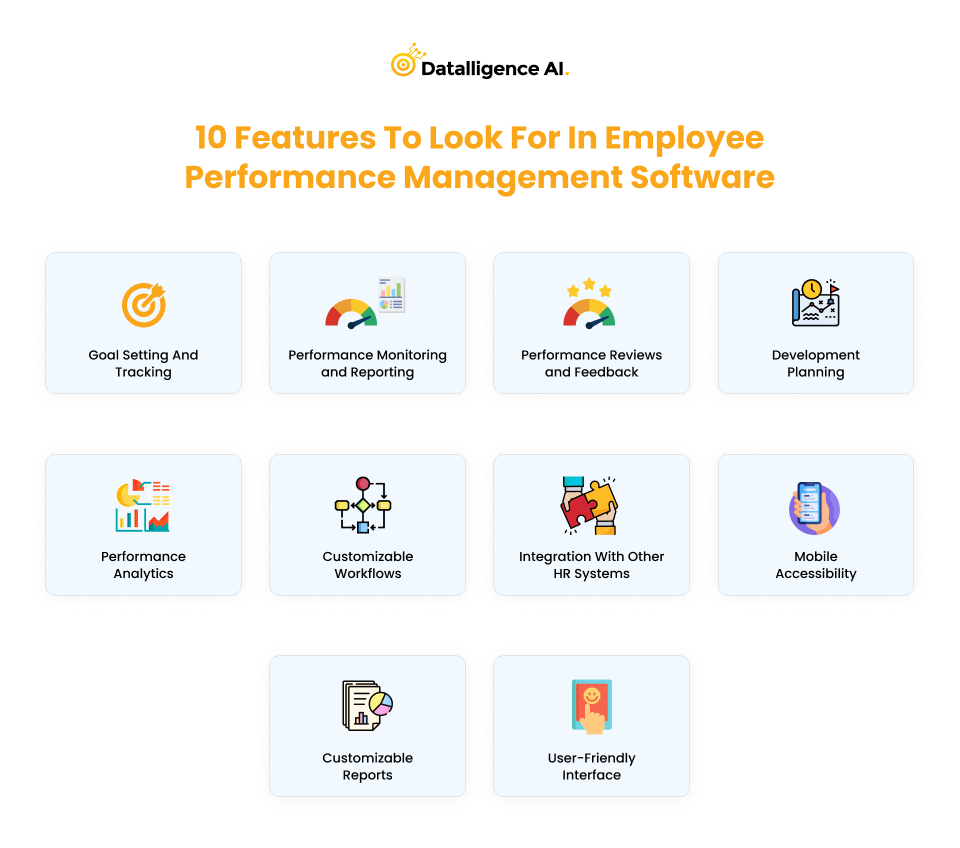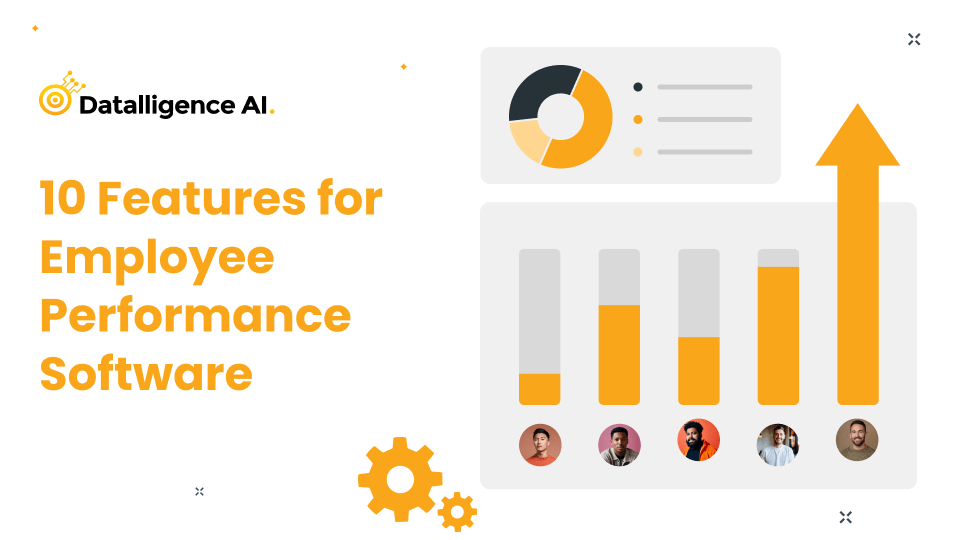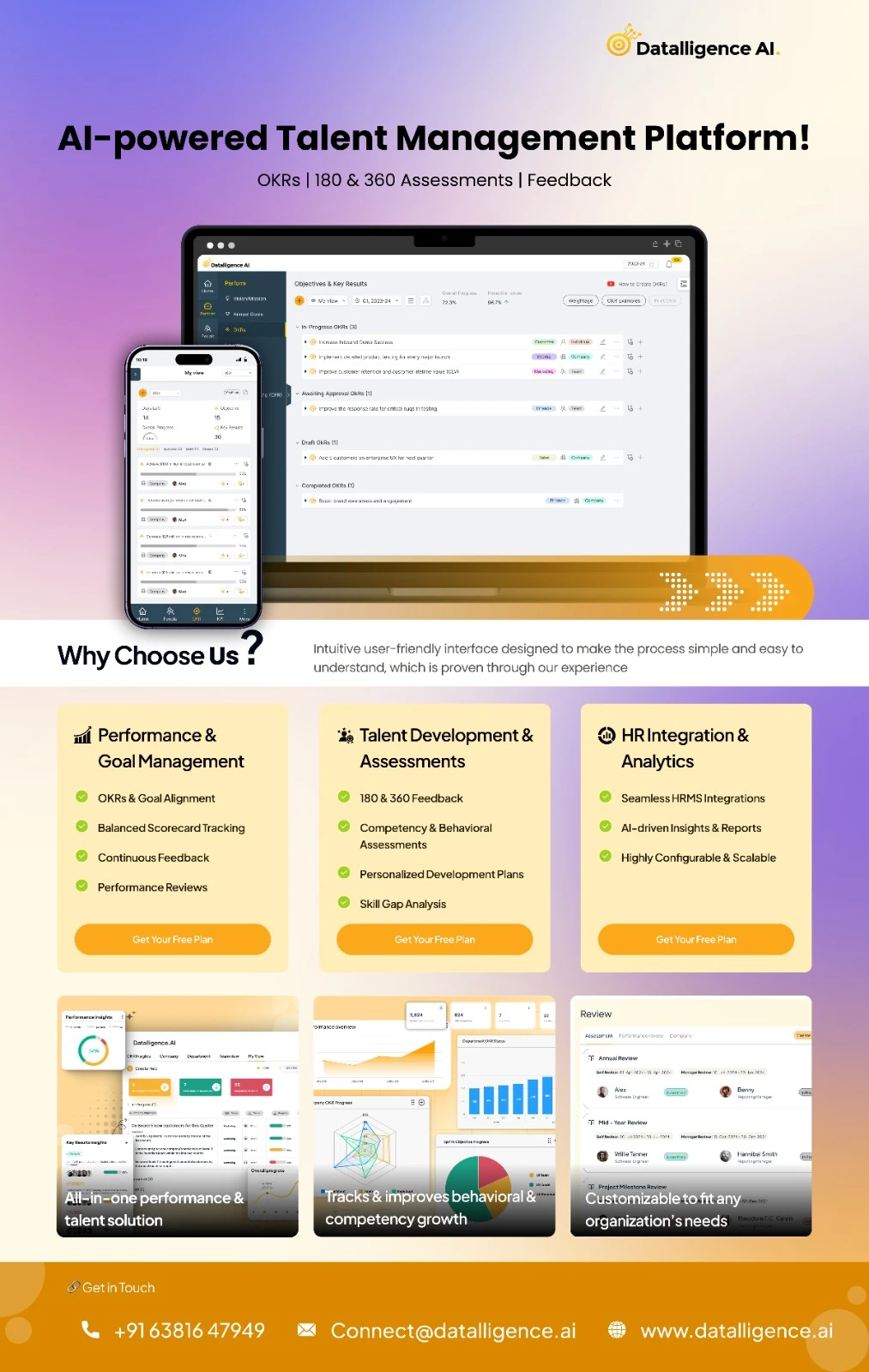As a business owner or manager, you already know that a high-performing team is at the heart of every successful organization. After all, when your employees thrive, your business does too. But here’s the real question, how do you get there? What’s the secret sauce behind consistently strong performance?
That’s where features for employee performance management software come into play.
So, what exactly is performance management?
Simply put, performance management is a structured, ongoing process designed to boost both individual and organizational performance. It starts with setting clear goals, then moves into regularly tracking progress, and finally, evaluating outcomes. Along the way, businesses use a variety of tools and systems to measure and improve performance at every level. From aligning team goals with business objectives to providing timely feedback and development opportunities, the features for employee performance management ensure everyone stays on the same page and keeps moving forward.
Let’s break it down and see how these features can transform the way your team performs.
How do you define performance management?
Performance management is much more than just an annual review it’s a continuous, strategic process. It begins with setting clear, aligned goals and moves seamlessly into tracking progress and evaluating results. Along the way, businesses leverage key features for employee performance management to drive growth, accountability, and engagement. These features help measure performance, provide timely feedback, and support development across all levels of the organization. In short, it’s a system designed to keep teams aligned, motivated, and consistently improving.
6 key features for performance management software that works
Goal setting
Setting clear and measurable goals and objectives that align with the company’s overall strategy and vision.
Performance monitoring
Performance management tools like scorecards, dashboards, and KPIs help to monitor and measure performance against set goals regularly
Feedback and coaching
Providing regular feedback and coaching to employees to help them improve their performance and achieve their goals.
Performance appraisal
Conducting periodic performance appraisals to evaluate employees’ performance and determine areas for improvement and development.
Learn more about performance management vs appraisal in our latest blog.
Performance improvement planning
Developing performance improvement plans to help employees address any performance gaps and achieve their goals.
Reward and recognition
Recognizing and rewarding employees for their achievements and contributions to the business’s success.
What is performance management software?
Performance management software is a type of technology tool designed to support the process of managing employee performance in an organization. It typically includes various tools and features that enable managers and employees to monitor, measure, and track performance against goals.
At its core, it allows organizations to collect and store data on employee performance, which can be used to make informed decisions and improve overall performance. This data can include everything from performance reviews and feedback to training records, goal progress, and key performance indicators (KPIs).
10 Features to look for in employee performance management software

Employee performance management software is a technology tool that can help organizations manage and track employee performance. To ensure that performance management software meets your company’s needs, it’s essential to consider the included features carefully.
Here are 10 key features to look for in employee performance management software:
Goal setting and tracking:
Performance management software should allow managers to set SMART goals for employees and track progress toward those goals. To ensure that employees are working towards the common goals and objectives of the organization, this feature can be utilized effectively.
Performance monitoring and reporting:
The software should allow managers to monitor their employees’ performance in real-time, evaluate their advancement based on KPIs, and identify specific areas that require improvement. This feature can help managers stay on top of employee performance and take action when necessary.
Performance reviews and feedback
Performance management software should include tools for conducting regular performance reviews and providing feedback to employees. This can include self-assessment tools, 360-degree feedback, and manager reviews.
Development planning
The software should include tools for creating development plans and tracking progress toward career goals. This can help employees stay engaged and motivated by providing a clear path for career advancement.
Performance Analytics
The software should include analytics features, which use machine learning algorithms to analyze performance data and identify patterns and trends. This can help organizations to make data-driven decisions and optimize performance over time.
Configurable sequences
Performance management software should allow organizations to customize workflows to fit their unique processes and requirements. This can help ensure that the software is tailored to the needs of the organization.
Integration with other HR systems
The software should integrate with other HR systems, such as payroll and time and attendance systems. This can help ensure that data is accurate and up-to-date across all systems.
Mobile usability
To facilitate convenient access to performance data and tools for managers and employees, the software must be optimized for mobile devices.
Tailorable reports
The software should allow organizations to create customized reports to analyze performance data and track progress toward goals. This feature can help organizations identify trends and opportunities for improvement.
User-friendly interface:
Finally, performance management software should have a user-friendly interface that is easy to navigate and use. This can help ensure that managers and employees can access the tools they need quickly and efficiently.
Benefits of implementing employee performance management software
There are several benefits of implementing employee performance management software in an organization. Here are some of the key benefits:
Automating Performance Reviews
Employee performance management software automates the performance review process, making it easier for managers to track employee progress, set goals, and provide feedback. This saves time and reduces the administrative burden associated with manual performance review processes.
Improved Visibility
With employee performance management software, managers can easily track employee performance metrics, identify areas of improvement, and make data-driven decisions. This visibility enables managers to provide timely feedback, recognize high performers, and provide targeted training to employees who need it.
Increased Employee Engagement
Employee performance management software can help improve employee engagement by providing employees with clear goals and objectives and helping them understand how their work contributes to the company’s overall mission. This can lead to increased motivation, job satisfaction, and retention.
Better Talent Management
Employee performance management software can help identify top performers, as well as employees who may need additional training or development. This information can be used to develop talent management strategies that maximize employee potential and align with the business’s goals.
More Effective Communication
Employee performance management software provides a platform for managers and employees to communicate more effectively. This includes setting goals, providing feedback, and discussing career development opportunities. This increased communication can lead to better working relationships and increased productivity.
Compliance with Regulations
Employee performance management software can help ensure compliance with regulations by providing a record of performance reviews, goal setting, and feedback. This can help organizations avoid legal issues related to discrimination, wrongful termination, or other employment-related matters.
How to choose employee performance management software
When selecting the right employee performance management software, there are several factors to consider.
- To ensure software meets company requirements, it’s crucial to clearly define specific needs and goals, such as identifying performance data to track, reviewing it regularly, and determining desired personalization levels. The clarity in these areas will help to ensure that the software is developed to meet the company’s specific needs.
- It’s crucial to make software easy to use and navigate to encourage user adoption and engagement.
- The software’s coherence with existing HR systems should be assessed to ensure seamless integration.
- The software’s ability to analyze and report data should be assessed to ensure it enables valuable insights and informed decision-making.
- The software’s mobile admittance and remote performance management capabilities should be assessed to ensure flexibility for a remote or hybrid workforce.
- Lastly, the software’s security and compliance measures should be evaluated to ensure the safe handling of sensitive employee data.
Conclusion
In conclusion, there are various features that you should look for in employee performance management software. Selecting the right performance management software can help improve employee engagement, productivity, and retention while streamlining administrative tasks for HR personnel. When selecting software, it’s important to consider essential features that align with your business goals and workforce needs. Talk to our coaches and experts to gain more insights or try Datalligence for free.












